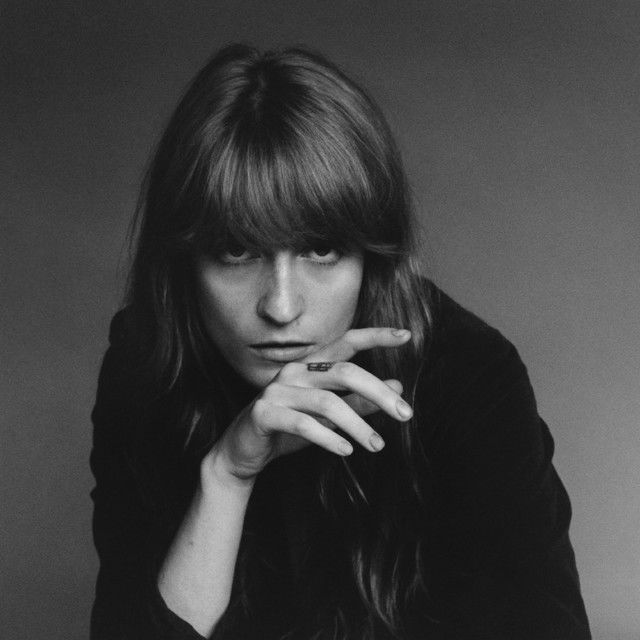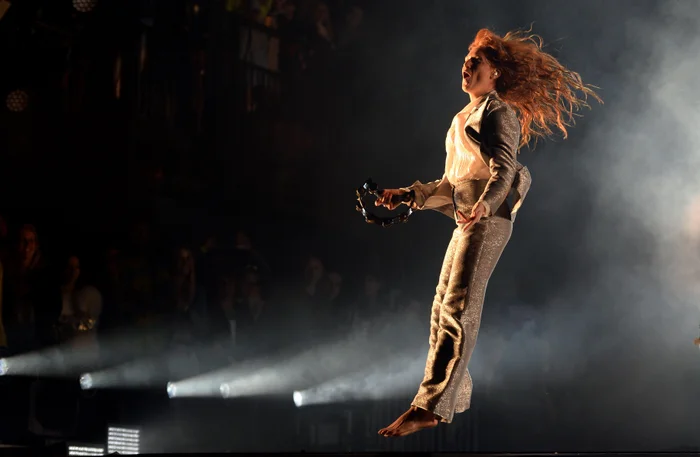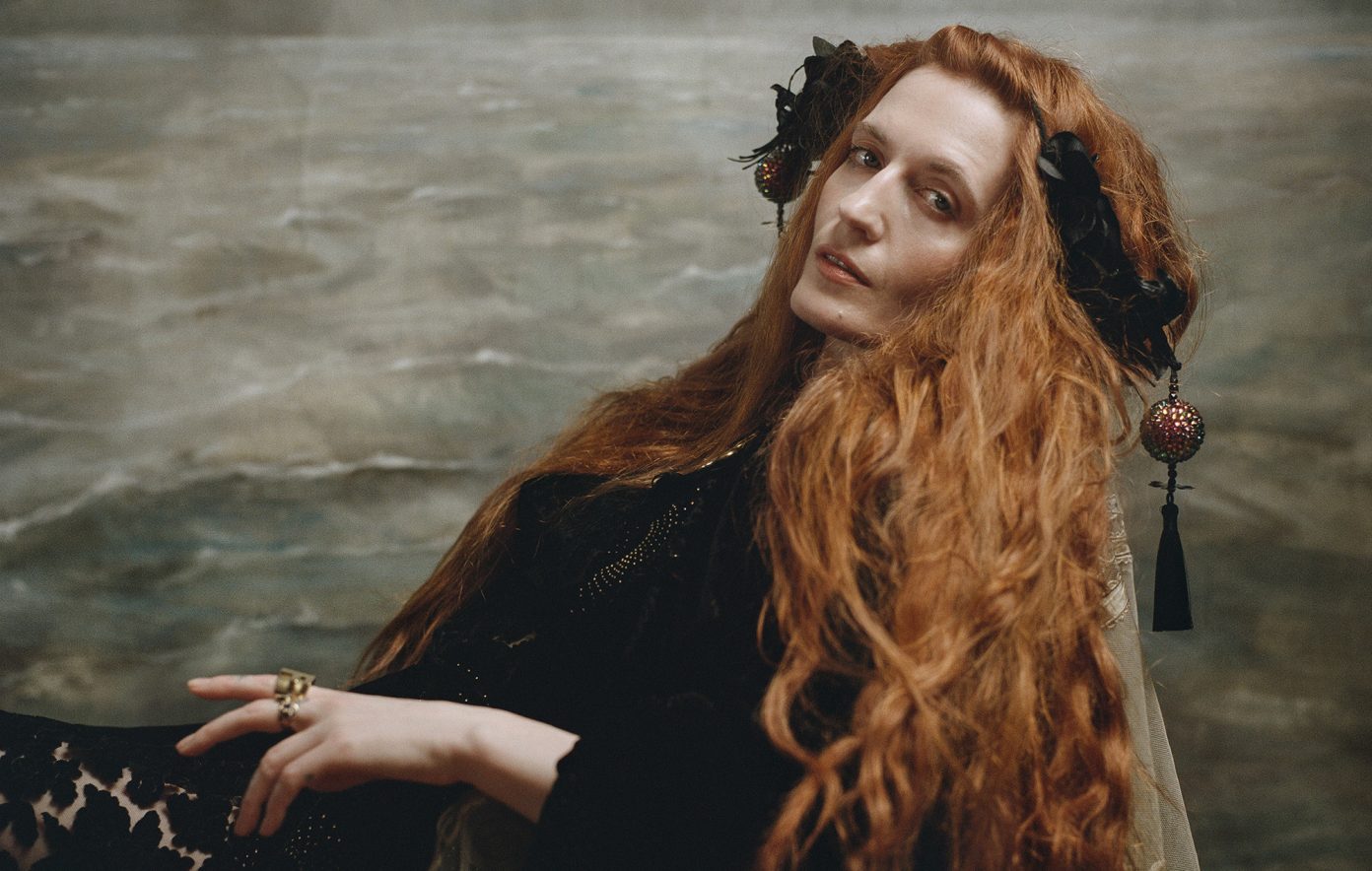Song Stories: Florence & the Machine: Queen of Peace
With the release of her third album, 'How Big, How Blue, How Beautiful', Florence Welch solidified her place as a superstar. This album catapulted Florence + The Machine to the top of festival bills, including a memorable headline set at Glastonbury, where they replaced Foo Fighters after Dave Grohl suffered a broken leg.
The album spawned four singles: 'What Kind of Man', 'Ship to Wreck', 'Delilah', and 'Queen of Peace'—each of which showcased a more introspective side of Florence, a direction she had briefly explored on earlier albums. However, 'How Big, How Blue, How Beautiful' was recorded during a period of significant personal upheaval. Florence was navigating the pressures of fame while dealing with the emotional fallout of a difficult breakup, and these raw emotions seeped deeply into the music.
In interviews, Welch revealed that she felt at a crossroads, struggling with her identity and seeking healing after emotional turmoil. At its core, 'How Big, How Blue, How Beautiful' explores these struggles, reflecting a desire to reconcile with the past while embracing the possibility of redemption and transformation.
Musically, the album marks a shift in Florence + The Machine’s sound. While the grand, orchestral elements of 'Ceremonials' are still present, this album is notably more grounded and stripped back in places. The lush, baroque pop style of previous records is balanced with a rawness and intimacy that feels fresh and personal. Tracks like 'Ship to Wreck' boast sweeping, cinematic soundscapes, while others, like 'Queen of Peace', lean into haunting, introspective moments.

'Queen of Peace' encapsulates the album's overarching themes. The song delves into inner conflict, self-doubt, and the battle for peace amidst emotional chaos. It stands out for its powerful orchestration and the emotional depth of Florence’s vocals.
In an interview with Jo Whiley on BBC, Florence explained the creation of 'Queen of Peace': “This song was written with Markus Dravs at a time when he was pushing me to write triumphant songs about overcoming things, but I still wasn’t in the best place. We reached a different kind of triumph through struggle, rather than pretending everything was fine.”
The arrangement of 'Queen of Peace' mirrors the song’s emotional journey, beginning with delicate piano before gradually building in intensity. This progression reflects the process of confronting inner demons and emerging stronger. The song’s soaring instrumentation echoes the emotional depth that defines the entire album.
Throughout 'How Big, How Blue, How Beautiful', Florence weaves a complex narrative of love, loss, and transformation. The album explores both romantic and self-love, highlighting the challenge of reconciling these emotions with the need for self-preservation and healing. The journey toward self-acceptance is fraught with difficulty, yet there’s a sense of empowerment in embracing vulnerability.
Ultimately, 'How Big, How Blue, How Beautiful' is deeply personal, yet universally relatable. It captures the complexities of human emotion, grief, longing, confusion, and hope, giving them a musical form that is both grand and intimate. Through tracks like 'Queen of Peace', Florence invites listeners into her emotional world, sharing her struggles and triumphs in a way that encourages others to confront their own challenges and find the strength to move forward.
The album serves as a beautiful reflection of the healing process, a reminder that peace often comes from facing our deepest fears. With 'How Big, How Blue, How Beautiful', Florence + The Machine crafted a masterpiece that speaks to the power of resilience and the possibility of transformation, solidifying it as one of their most significant works to date.
Florence is undeniably one of the finest voices in British music. Her writing is breathtaking, and she continues to create some of the most unique songs in the industry.
This album marked a major milestone in her career, and her performance at Glastonbury was a defining moment. For a field that had expected Foo Fighters but got Florence instead, she not only won over the crowd, but also brought a new energy to the festival. It was an unexpected but well-deserved moment one of the most important performances in recent memory.

Florence had the songs to back up such a monumental performance, and since then, she has continued to thrive, playing in arenas and headlining major festivals worldwide. If anything, Florence’s success paved the way for artists like Adele and Taylor Swift to follow.
It’s worth noting that Florence was the first female British headliner at Glastonbury since Skunk Anansie in 1999. This symbolic performance showed that Glastonbury was willing to take risks on contemporary pop stars, not just rely on legacy acts.
Florence’s Glastonbury performance opened doors for other artists who followed in her footsteps.
Since the release of 'How Big, How Blue, How Beautiful', Florence has continued to craft deeply personal masterpieces. Her fourth studio album, 'High As Hope' (2018), marked a shift toward a more intimate sound. Though it still featured some of the lush arrangements that fans loved, 'High As Hope' focused more on vulnerability and introspection. Songs like 'Hunger' and 'Grace' explored themes of fame, self-worth, and the intricacies of human emotions.

In the years that followed, Florence embraced a more dance-driven sound with 'Dance Fever', creating anthemic choruses around themes of personal reclamation. The gut-wrenching lyrics of 'Hunger' chronicled her recovery from an eating disorder, while 'King'—with its explosive chorus—tackled the inner conflict of balancing a demanding career with her desire to have children. The tear-soaked disco pulse of 'My Love' feels like a cathartic therapy session set to the backdrop of a pulsing indie club night.
Florence's ability to create music that’s both deeply personal and universally resonant has earned her a loyal fanbase and critical acclaim. Her fearless approach to vulnerability in her lyrics, paired with her unmatched vocal ability, has solidified her status as an icon in modern music. As she continues to evolve and experiment with new sounds, her legacy as a genre-defying artist is assured.